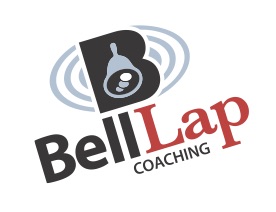Sports Psych 101: Confidence
In our last article, we talked about the different types and sources of motivation, and how those fuel a cyclist's drive to perform.
But, motivation alone doesn’t lead to improved fitness or race results – it’s acting on those motivations that leads to changes. If motivation is the fuel, we can think about confidence as the spark that kicks an athlete into action.
What is confidence?
Confidence is the belief in one’s own abilities, developed through experiences testing the strength of those abilities. Self-assurance and confidence grow as you push through hard workouts and tackle challenging terrain or events. And, importantly, failed workouts and disappointing races can help a rider build confidence as they learn, adapt, and improve.
The Power of Confidence
Riders benefit from a strong sense of self-confidence in a number of ways, including:
Enhanced Performance: Confidence empowers cyclists to push their limits, take calculated risks, and perform at their peak under pressure. A strong sense of self-confidence helps us tackle a big workout, push past our limits, and race smartly, (even when the outcome is uncertain).
Resilience in the Face of Adversity: Crashes, mechanical issues, bad weather, and missed workouts are realities that we face as athletes. It’s easy to feel strong and confident when training, racing and recovering are going well. But, when things go sideways, a foundation of self-confidence can help us push through and learn from disappointments and adversities.
Optimized Training and Preparation: Having confidence in the direction of your training makes it easier to commit to your workouts and to proper recovery. Completing workouts, seeing improvement over time, and taking demonstrable action towards your goals will build confidence in a positive feedback loop.
Strategies for Building Self-Confidence
Make a plan, and measure your progress: One of the best ways to build confidence is to reflect on where you started, and where you are now. Pick a key workout, hill, or route that you do regularly, and find a way to measure your performance – power output, elapsed time, or speed are common metrics. Then, record your performance over time in your training log or journal. When you’re feeling frustrated or plateaued, refer back to your training log and earlier workouts to gain some perspective.
Train in Adverse Conditions: Confronting and overcoming adversity in training and racing can lead to powerful gains in self-confidence. Whether it's riding in strong wind and rain, tackling steep climbs, or navigating technical descents, confronting discomfort head-on builds mental resilience, instilling a sense of confidence in your ability to handle whatever the road throws your way.
Cultivate a Growth Mindset: Adopting a growth mindset is essential for fostering confidence and facilitating continuous improvement. Rather than viewing setbacks as defeats, embrace them as opportunities for growth, learning, and building confidence. Focus on progress over perfection, acknowledging your improvements along the way.
A durable sense of self-confidence is a powerful tool that can us build fitness and strength, mentally and physically. Pushing through hard workouts and bad weather, facing off with worthy opponents, and reflecting on your training progress over time are all concrete ways to boost your self-confidence. Cultivate those situations in your own riding, and ride confidently towards your goals!
Next in our series of sports-psych articles, we’ll dive into concentration, why it’s important in your training and racing, and how to improve that area of your mental game.
